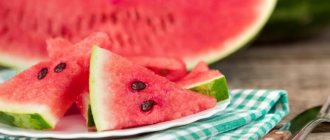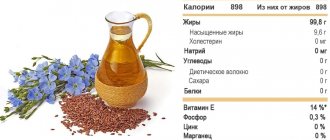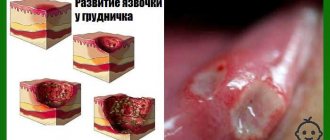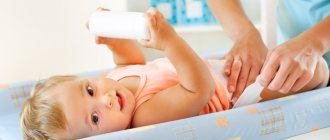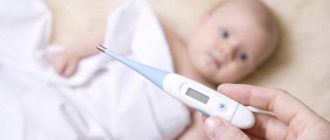When feeding, cracks appear on the nipples: what to do, how to treat, ointments, creams, prevention
Cracked nipples are a delicate female problem that often mars the joy of breastfeeding.
In some cases, nursing mothers are even forced to give up breastfeeding, depriving the child of an optimal nutritional option, and depriving themselves of the most important female function, which is physiological and, in principle, should not cause discomfort, much less pain.
In the worst case, cracked nipples become an entry point for infections and can cause lactation mastitis, an inflammation of the breast tissue.
In our article we will explain why cracked nipples form during breastfeeding, how to prevent this, and also discuss currently known methods of treating this problem, offered by official and traditional medicine.
Healing time for cracks
Shallow and uninfected cracks, if treated, disappear in 1-3 days. It takes up to 10 days for deeper damage to heal (with regular treatment of cracks with medicinal agents).
If the wounds on the nipples are infected, then treatment may take 1 month or more, since therapy is aimed at destroying the infection, relieving inflammation, healing damage and preventing complications.
Cracked nipples are painful and dangerous because they can become infected and cause mastitis. To independently detect even the smallest cracks, you can use photographs.
Why do nipple cracks occur?
This trouble, as a rule, happens to mothers in the first days of feeding a child. Possible reasons may be the following:
Incomplete latching on by baby
Even if you feed the baby for no more than 3 minutes and do not attach the baby to the breast correctly, constant irritation of the nipples will lead to their damage. Therefore, the main reason for the appearance of cracked nipples is not the duration and frequency of feeding, but not the correct attachment of the baby (see how to properly attach the baby for feeding).
Forcibly removing the nipple from the baby's mouth
If the mother tries to pull out the nipple on her own and stop the baby from feeding, the baby clenches his jaw, trying to hold it. Also, in the case of improper attachment (tummy up, not towards itself), the baby turns away at the end of feeding and also clamps the nipple in the jaws, creating pressure on it. The delicate skin of the nipples is not designed for such pressure and is easily injured.
What do cracked nipples look like?
Even first-time women can easily recognize cracked nipples by their typical appearance. Externally, the crack looks like a cut that starts from the center of the nipple and goes to its periphery.
They can be multiple or single, only on 1 breast or on both, superficial or deep. Ichor and even blood may be released from the crack.
Any touch to such a nipple causes pain, and the child’s attempts to suckle at the breast cause severe pain. Characterized by severe pain in damaged skin, which intensifies during feeding and often forces mothers to stop feeding. If an infection, both bacterial and fungal, occurs, mastitis or inflammation of the nipples may develop with purulent discharge, the formation of erosions, ulcers, and redness of the skin in the area of inflammation.
Should you stop breastfeeding if you have cracked nipples?
Under no circumstances should you and there is no reason to give up breastfeeding and switch to formula: this is a sure way to suppressed lactation and the subsequent refusal of the child to breastfeed.
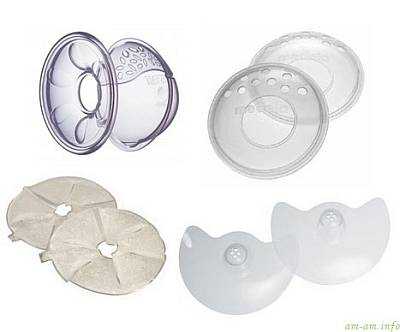
If the cracks are small, you can continue to feed the baby by applying special silicone or latex nipple covers (Avent, Medela Contact, Lindo, Chicco, Nuk, Conpol, Pigeon, Tommee Tippee, etc.). It is important to choose the correct size of the shield for the length of the nipple. But if the cracks are strong and bleed, even pads may not help.
For deep cracks, you should carefully express milk and feed the baby with a spoon or pipette, while actively treating damaged nipples. It is highly undesirable to use bottles, as the baby may get used to an easier way of getting food and not latch onto the breast.
If mastitis or infectious inflammation of the mammary glands develops (increased body temperature and at the site of inflammation, swelling, redness), the infection can be transmitted to the baby, so in these cases breastfeeding is stopped, and the baby is fed pasteurized expressed milk.
What should you not do for cracked nipples?
Cracks in the nipples during feeding occur very quickly, driving inexperienced mothers into a dead end, who begin emergency and sometimes incorrect treatment. Every mother should know what not to do for cracked nipples, since wrong actions are even worse than no treatment!
- Do not wash your breasts, especially with soap! The alkaline environment corrodes already damaged skin, the protective layer is washed off and cracks threaten to turn into bleeding ulcers.
- You should not use ointments containing antibiotics, much less drink antibiotics without a prescription. First, the antibiotic can pass into mother's milk.
- Secondly, it will destroy beneficial flora, which prevents pathogenic microbes from developing. Antibacterial and antifungal drugs can only be prescribed by a doctor in case of a fungal or microbial infection!
Basic rules of care
First of all, it is necessary to establish the process of breastfeeding, observing the rules for attaching and removing the baby from the nipple.
It is also important to follow breast care recommendations:
- Do not wash your breasts and nipples too often. Washing should be done 1-2 times a day with warm water, without using soap, lotions or other detergents. Soap (preferably baby soap) is allowed to be used once a day.
- The skin of the breast should not be wiped or rubbed with a hard towel. It is necessary to allow the moisture to dry naturally, or gently blot the skin with a napkin.
- Do not touch areolas and nipples with dirty hands; before applying medications or feeding, you must wash your hands with soap.
- You cannot use brilliant green, iodine and alcohol to treat cracks, as these products dry out and corrode the skin.
- It is important to keep your breasts open (no pads, bras or clothing) as often as possible. This helps to avoid a humid environment on the skin, which provokes the development of harmful microorganisms.
- You need to change your breast pads regularly (every 2-3 hours) and wear a new, clean bra every day.
Treatment of cracked nipples
How to treat cracked nipples? The first thing a woman should do is visit a gynecologist. Some products cannot be used without a doctor’s prescription (metabolic stimulants - Actovegin, Radevit, etc.). Unfortunately, from the first days of crack formation, complications can begin that only a doctor can see.
Local drug treatment: ointments and creams for cracked nipples
Lubricating the nipples should be done immediately after finishing feeding; the product should have time to be absorbed (or washed off with water) before the next application to the breast. It is worth noting that most industrially produced creams contain several components in their composition, for example, dexpanthenol and lanolin at the same time. This classification is carried out conditionally, according to the main active substance.
Preparations and creams based on dexpanthenol
Dexpanthenol is a safe wound-healing substance, a derivative of pantothenic acid, i.e. vitamin B. Any drug is applied to the skin of the nipple in the area of damage immediately after feeding. It is necessary to wash off before the next feeding of the baby. The most popular ointment for cracked nipples Bepanten, however, is equivalent in effect to all analogues
- Korneregel, eye gel, but can be used for treating nipples, 270 rub.
- Cream-balm for nipples from JSC "Elfa", 150 rub.
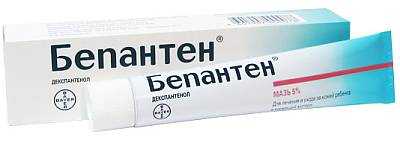
Products based on zinc oxide
Zinc oxide is an antiseptic that has a drying and astringent effect, preventing infection of the wound. Apply a thin layer of creams and ointments to the crack area. It is necessary to wash off before feeding the baby.
- Desitin from Pfizer HCP Corporation 250 rub.
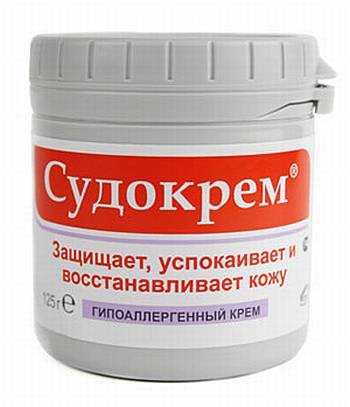
- Sudocrem from Forest 230 rub. 60gr.
Drug treatment
By contacting your doctor, you will receive professional detailed advice on how to treat cracked nipples so that they do not interfere with breastfeeding, heal quickly and do not lead to infection and inflammation. There are quite a lot of medications that help solve this problem not only effectively, but also safely for the health of mother and child.
Creams
Today, doctors even suggest using cosmetics to treat cracked nipples. For example, a protective cream can create a barrier film that will prevent the spread of infection. It will allow you to quickly get rid of this problem. However, before feeding, it must be washed off so that it does not get into the baby’s stomach with the milk.
With lanolin:
- PureLan from Medela (Switzerland);
- Nipple salve cream from Baby line (Germany);
- Nipple cream from Avent (England);
- Mama Brustwarzensalbe from Sanosan (Germany);
- nipple cream from Pigeon (Japan);
- Waiting for a miracle from the Rassvet concern (Russia);
- MultiMam from Ameda (Switzerland);
- Lanolin from Lansinoh (Thailand);
- Lanovit from Ecobiofarm;
- Brustwarzen-salbe from Babydream (Germany);
- Lanolin from Mommy Care (Israel).
With dexpanthenol:
- Panthenol;
- Bepanten cream has proven itself well (it also exists in the form of an ointment), which contains not only dexpanthenol as an active substance, but also protegin X, cetyl and stearyl alcohols, lanolin, beeswax, soft and liquid paraffin, almond oil.
With zinc oxide:
Sudocrem.
With natural oils:
- Mamy Cucciolo from Natura House (Italy);
- nipple cream for cracks Mama Comfort (Russia).
With plant extracts:
Nipple Care Cream from BABE Laboratorios (Spain).
Distinguish between creams and ointments. The former have exclusively cosmetic and preventive functions (protective, moisturizing, softening), while the latter have a therapeutic effect.
Ointments
After examining the breasts, the doctor will probably prescribe some ointment that promotes the healing of cracked nipples, due to its medicinal (anti-inflammatory and wound-healing) properties. Modern pharmaceuticals offer a huge number of such medications.
With dexpanthenol:
- Dexpanthenol;
- Bepanten.
With zinc oxide:
- Desitin;
- zinc ointment.
With retinol:
- We see;
- retinoic ointment;
- Radevit.
With plant extracts:
Vulnuzan.
Wound healing:
- for cracked nipples, doctors often prescribe Solcoseryl, a wound-healing ointment made from the blood of dairy calves;
- Actovegin.
After examining your breasts, the doctor will prescribe what to apply to cracked nipples in your case. After all, each of the above drugs has a specific effect. For some people, the wounds are not very deep and a light retinoic ointment will be enough. For some, they are so deep that they will require the help of the powerful Bepanthen. So follow the doctors' recommendations - and the healing of cracks will not take long.
Solutions
To treat cracked nipples during breastfeeding, oil or other solutions may be prescribed. Their liquid consistency ensures rapid absorption, so that the active components cannot enter the baby's stomach with milk.
Zelenka
In some cases, a brilliant green solution (the so-called brilliant green solution) helps get rid of cracked nipples. The wounds are lubricated immediately after feeding - the problem area is disinfected and dried, which speeds up healing. In order not to burn the delicate skin of the breast, after such treatment (after about 10 minutes) it is recommended to lubricate the nipples with Vaseline.
Glycerol
Ordinary glycerin in the form of liquid works well to heal cracks in the nipples during breastfeeding. Apply a generous layer of it to the wound or apply gauze soaked in it for about 20 minutes.
Miramistin
Another medicinal solution that has a pronounced healing effect is Miramistin, which is usually prescribed if a crack in the nipple has festered, which may indicate the onset of an inflammatory process.
Despite the fact that most of these medications are freely available at any pharmacy, drug treatment for cracked nipples can only be prescribed by a doctor after examining the breast. Otherwise, using a cream or ointment, even the highest quality and most expensive, without a doctor’s permission can lead to the spread of infection and serious inflammatory processes. Even when using folk remedies, you must definitely warn your therapist about this.
Causes of cracks
Cracks in the nipples can be single or multiple; visually they look like a cut starting in the center of the nipple and moving towards the edges. Problems may occur on both breasts or just one. The depth of the lesion also varies. Deep cracks in the nipples can release ichor and even blood. Cracks joining together aggravate the condition of the nurse. The reasons for the appearance of cracks are different, the main ones include: infections, improper latching of the breast, improper hygiene and care of the mammary glands.
Incorrect grip
The grip position is incorrect if:
- there is pain during feeding;
- the baby only grasps the nipple;
- The areola is not captured and remains outside the mouth.
You can heal small nipple cracks even without the help of medications, simply by adjusting the correct grip position. It's done like this:
- the baby needs to be completely turned towards the mother, with the head in a position that does not require turning the head to latch onto the breast;
- The baby's head should be tilted back quite a bit;
- open the baby’s mouth so that the lower lip completely covers both the nipple and areola;
- the upper lip almost completely covers the areola;
- the baby's chin touches the chest;
- The baby sucks slowly and smoothly, while you can hear him swallowing the milk.
If the baby is not suckling properly or the mother experiences pain, it is necessary to start the process all over again, helping the newborn to latch onto the mammary glands correctly. The baby will easily open his mouth if you run the nipple of the breast along the lower lip, after which you can put the breast in the mouth.
Infection
Incorrect placement of the breast latch leads to cracked nipples, which can be aggravated by infections that develop when hygiene rules are not followed. The skin on the chest becomes red, swollen, and pain appears even with a simple touch.
Reasons for appearance
Lactation is a process provided by nature. But even this must be treated with due responsibility, avoiding gross mistakes. Among which:
- lack of knowledge about the physiology of the milk production process;
- incorrect latching technique;
- improper breast care and hygiene.
Cracks in the nipples during feeding also form due to weakened immunity, anatomical features of the breast structure and hypovitaminosis in nursing mothers.
Incorrect chest grip
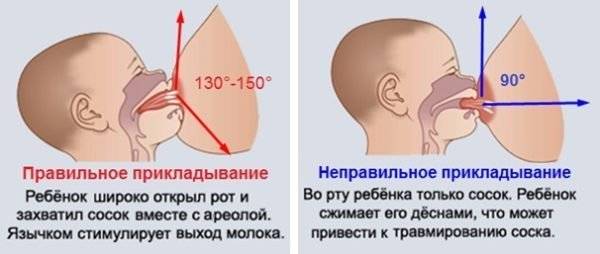
Incorrect mouth girth around the chest is the most common cause of cracks. Normally, the nipple should fit snugly against the baby's palate while the baby's gums squeeze the areola. If this technique of attachment is violated, the child squeezes the very tip of the breast with his mouth, causing damage to it. Even limiting the feeding time will not help to avoid pain and the growth of the crack in size.
At a later age, the child may cause damage to the chest at the time of teething. Then the mother often experiences a crack around the nipple.
Violation of feeding technique
The second most popular cause of cracks is considered to be abrupt and inaccurate removal of the child from the breast. Such damage can be caused when the baby's nipple is suddenly taken away, in which he clenches his gums and pulls it back. It would be more correct to fix the slightly open jaws with your little finger and carefully remove the breast from the baby’s mouth.
It is also important at the time of feeding to hold infants with their stomach towards the mother, supporting the head, otherwise, after saturation, the baby will turn in the opposite direction, holding the nipple in the gums. Sometimes the formation of wounds is also influenced by how long the baby sucks at the mother’s breast.
Sometimes the formation of wounds is also influenced by how long the baby sucks at the mother’s breast.
Incorrect pumping
Due to lack of knowledge, many women express their breasts incorrectly. At the same time, they compress the nipple itself instead of the areola. Therefore, the best solution before expressing would be to consult a breastfeeding specialist.
Some modern breast pumps can also cause injury to a woman when the nipple is latched on. This happens as a result of the roughness of the material of the device or non-compliance with the instructions for its operation.
Breast skin care
Not only rare, but also frequent washing of the nipples (after each feeding) harms their integrity. Water removes the natural lubricant secreted by the Montgomery gland from the skin. This substance has moisturizing, antiseptic and protective properties.
A nursing mother should:
- forget about skin-drying medications;
- give your breasts air baths more often and stop regularly wearing absorbent nipple pads.
Sensitive nipples
Breast damage from breastfeeding also occurs due to nipple sensitivity (60% of cases) - this condition is called mastodynia. In addition to cracks, with high breast sensitivity, a woman experiences swelling and discomfort in the mammary glands.
Mastodynia is associated with physiological processes (growth of mammary glands in adolescence, during pregnancy or in the premenstrual period). This phenomenon may also be associated with diseases (mastitis, abscess, mastopathy) or mental disorders of the woman.
Nipple skin diseases
Women with too dry skin rarely try to maintain natural feeding, since their nipples almost always have cracks. The main cause of this symptom may be eczema (atopic dermatitis).
Treatment of cracked nipples
Cracked nipples have a reason that needs to be found out. Only after figuring it out can you begin to treat the consequences. Violation of sucking technique or other causes must be eliminated:
- Establish the correct chest grip. A newborn must latch onto the breast correctly; with this latch, the woman will not experience pain during feeding, even if she already has damaged skin and cracks in the nipple area.
- Cure the infection. Treatment with antibiotics or antifungal drugs is possible even during lactation, but such medications should only be prescribed by a doctor.
- Maintain good hygiene. You should not wash your breasts before every feeding. To protect clothing from excessive milk flowing from the breast, you can use special pads, but they should be changed as often as possible to prevent harmful bacteria from multiplying there.
- Change your pumping process. Be careful and delicate when pumping to avoid possible injury.
- You should not offer your baby an alternative to the breast. Supplementing your baby with a bottle or using a pacifier can cause a decrease in lactation.
Once the causes have been eliminated, you can proceed directly to the treatment of cracked nipples. We will talk about this below.
Some mothers are accustomed to bottle-feeding their baby, even though he is breastfed. This should not be done: lactation will decrease and the baby will have to work more actively on the breast to get milk
Shallow cracks
Small cracks in the nipple area appear either due to improper attachment, or simply as a characteristic feature of the first days of feeding (we recommend reading: how to properly attach a baby when breastfeeding?). Painful sensations are characteristic only of the very initial stage of feeding. The nipples and areola become red. The following treatment methods are recommended:
- Breast milk. The optimal and most accessible remedy for preventing the occurrence of any inflammation. Apply to damaged areas after feeding until completely dry. Milk is an excellent remedy for the prevention of cracked nipples.
- Creams with lanolin. Lanolin is available for sale in pure form (Medela, Lansino) and creams containing it. Lanolin has a natural composition, so there is no need to wash it off before feeding. The action of lanolin is as follows: reduces pain and inflammation, promotes regeneration, creates a protective film.
- Folk remedies. To get rid of cracked nipples, you can use a solution of Vaseline and rosehip oil, which must be mixed 2:1. After feeding, smear the breast with the product and cover it with a napkin, and wrap it with a plastic bag on top. A bra is already put on top of such a compress. When planning to feed the baby, remove the compress and wash the breasts lightly with water.
After 2-3 days of treatment, shallow cracks in the nipple area will disappear. Painful sensations will disappear and you will be able to feed your baby easily and joyfully.
Rosehip oil has strong regenerating properties, which are exactly what is needed for cracked nipples. In combination with Vaseline, this herbal preparation will help quickly get rid of an unpleasant symptom.
Deep damage
Severe skin damage takes a very long time to heal and requires more serious measures. It is recommended to use preparations based on panthenol, lanolin, as well as wound-healing preparations and antiseptics of natural composition:
- Wound healing remedy for cracked nipples. Nursing mothers are advised to treat skin damage with the following creams: Bepanten, Solcoseryl. When choosing the drug “Solcoseryl”, give preference to the gel form, since it tends to penetrate into the deeper layers of the skin, and the ointment “works” only on the surface. Purelan and Lansino creams and ointments will be good helpers on the path to recovery.
- Natural antiseptics. Anti-inflammatory oils from sea buckthorn or calendula will help relieve the situation. Sea buckthorn oil is most recommended, as it is an excellent wound healing agent and also has absolutely no contraindications. Apply a little breast milk over the oiled skin.
How to treat
First of all, you should eliminate the causes of cracks, and then begin to treat them.
Basic principles
If the damage is minor and not inflamed, then you can treat it yourself. If the cracks are deep, bleed and there is a possibility of infection, then you should consult a doctor to get a qualified recommendation on how to cure cracked nipples.
For minor damage you can use:
- Breast milk. After each feeding, it is necessary to lubricate the nipples with breast milk and leave it until completely absorbed. This method will quickly get rid of damage and prevent its occurrence.
- Cream containing lanolin. It will help speed up healing.
- Folk remedies.
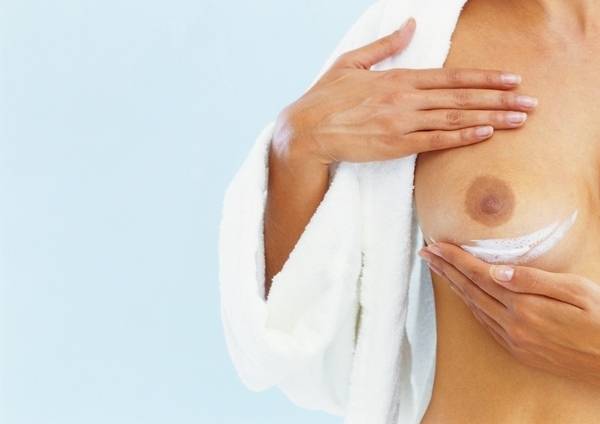
For deep damage:
- Healing ointments and gels for cracked nipples, which contain: panthenol, lanolin and antiseptics.
- Natural antiseptics. Natural oils with wound healing and anti-inflammatory effects.
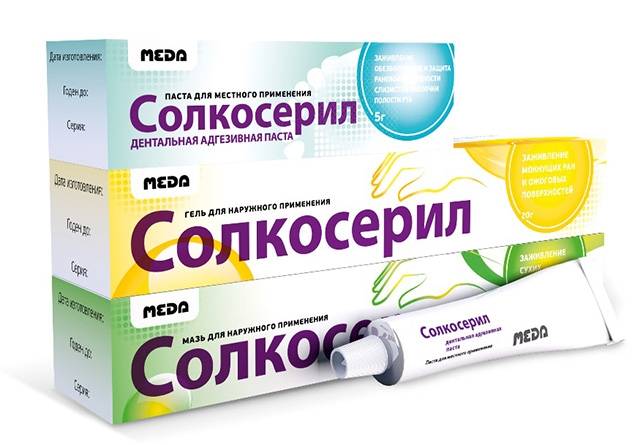
Ointments and gels
At the pharmacy you can purchase products that will help you quickly get rid of the damage and return to normal breastfeeding:
- Solcoseryl gel has proven itself well for cracked nipples. Before smearing cracks on the nipples, the wounds should be dried; you can use a hairdryer for this purpose. Then take a small amount of gel onto a toothpick or match and apply it inside the wound. The gel will glue its edges and speed up healing.
- Purified lanolin has the same effect, which also blocks nerve endings. This will make feeding less painful. Many healing preparations for nipples are made based on lanolin. It should be applied to the entire surface of the nipple and not washed off before feeding.
- Solcoseryl ointment heals wounds well, but it must be washed off before feeding.
- Levomekol. A combined drug containing methyluracil, which accelerates healing, and chloramphenicol, an antimicrobial component. The ointment should be applied to a sterile napkin and applied to the nipple twice a day. During treatment with Levomekol, it is better to refuse to feed the damaged breast or to clean it very thoroughly before feeding.
- Bepanten for cracked nipples can be used both in the form of a cream and as an ointment. It is applied in a thin layer after feeding and rubbed in with light movements. The drug does not need to be washed off, since almost all of it is absorbed before the next feeding.
- Cheaper analogues of Bepanten are: Pantoderm, D-Panthenol, Panthenol-Teva and Dexpanthenol.

The choice of modern and effective drugs in pharmacies is quite diverse and it will not be difficult to choose the necessary drug.
Traditional methods
Our grandmothers also knew how to smear cracked nipples, using the gifts of nature for this:
- Sea buckthorn oil for cracked nipples is the first assistant. It perfectly heals wounds, softening the skin and preventing the appearance of new damage. Apply to the affected area after each feeding. Does not wash off.
- St. John's wort oil. 0.5 kg of fresh flowers are poured with a liter of sunflower oil and infused for three weeks. Then the oil needs to be strained. An oil-soaked napkin is applied to the sore nipple. You can also prepare and use aloe oil.
- Cabbage leaves quickly relieve swelling and inflammation and speed up healing. The leaf is applied to the sore chest.
- Natural butter or sunflower oil can be used to lubricate the nipples after each feeding.
- Soak a clean cloth with a decoction of chamomile, birch leaves or oak bark and apply it to the inflamed area.
- An infusion of propolis in sunflower or olive oil speeds up healing well; it is used like sea buckthorn oil for nipples - applied in a thin layer to the damaged area.
- The beet pulp is applied to the nipple and changed periodically, removing it only during feeding.

Remedies for cracked nipples
Breastfeeding is the most natural and easiest way to provide nutrition to a newborn baby. Mother's milk protects the baby from infections, prevents the risk of developing food allergies, promotes the growth of healthy teeth and improves intellectual development. The process of breastfeeding is associated not only with the joy of motherhood, but also with some complications, especially in the first weeks after childbirth. Discomfort during feeding is considered quite normal, but severe pain, cracked and bleeding nipples are always a reason to consult a doctor. What Causes Soreness and Cracks During Breastfeeding? What should breast care be like for a nursing mother? Let's talk about this in our article.
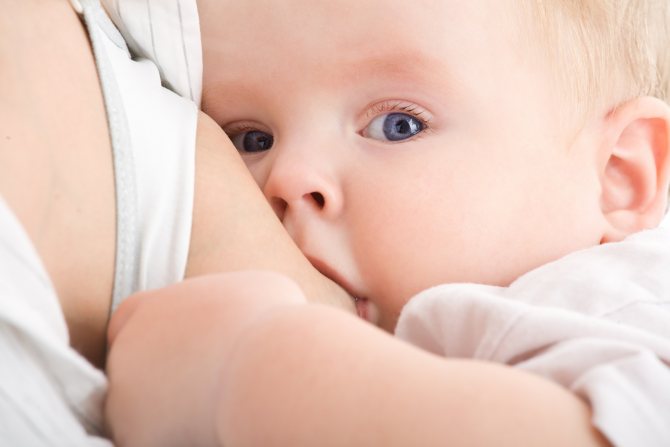
Possible causes of cracked nipples
With the birth of her first child, a woman is introduced to many new sensations, but pain during feeding should not be one of them. Sometimes, to eliminate pain and discomfort, it is enough just to change the position of the baby at the breast, to correct the newborn’s grip on the nipple (the nipple should be inserted deeper into the baby’s mouth). Experiment with different feeding positions to find what works best for you and baby. Try the classic position: sit upright and lift the baby to chest level, holding it with one hand from below, under the shoulder blades. This will help avoid straining the muscles of your back, neck, arms and shoulders.

To avoid pain during feeding, doctors advise:
- feed the baby at least once every 2 hours. This will allow the baby to stay full between feedings and not bite or latch on to the breast so “aggressively”;
- use special pads made of soft silicone to help protect and lengthen the nipple;
- first apply the baby to the less painful breast;
- choose the right bra size, choosing models made from natural fabrics with detachable cups.
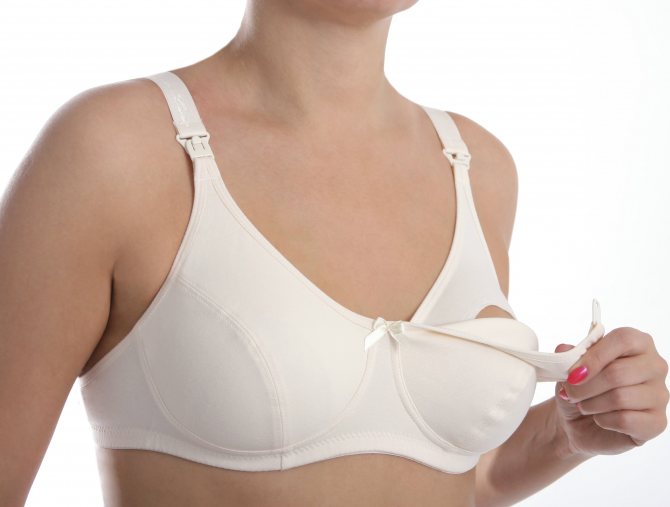
The cause of the formation of cracks and bleeding wounds on the nipples may be dermatitis or eczema , which arise due to excessive dryness of the skin in this area of the body. In this case, you need to seek help from a dermatologist to undergo therapy against skin diseases.
A yeast infection (thrush) may be the culprit behind red, itchy, sore, shiny skin on the areola . The fungus easily spreads to the breast from the baby's infected oral cavity, causing sharp, stabbing pain and burning sensation when feeding. Thrush can be treated with antifungals and probiotic supplements.

A short frenulum in a baby is also an obstacle to normal breastfeeding and the appearance of cracked nipples. The problem is solved with a minor dental operation.
Causes of cracks
Unreasonable formation of cracks on the chest is impossible. Common causes of deterioration in the appearance of the nipples include:
- Incomplete breast latch by the baby during breastfeeding.
- Baby biting nipples during the first teething period.
- Abrupt removal of the mammary gland from a child during feeding.
- Incorrect technique for expressing milk.
- Improper breast care during lactation.
- Introduction of artificial nutrition through rubber nipples.
- Wearing underwear made from synthetic materials.
- Fungal infections in the mouth of a child.
- Local allergic reactions to cosmetics.
Incomplete nipple latching
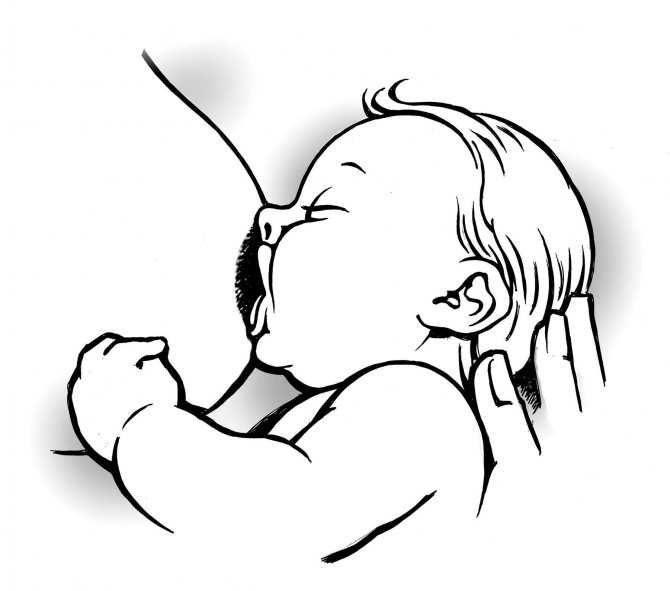
A newborn baby is not able to latch onto the breast correctly during feeding due to lack of experience in breastfeeding. Incorrect posture of the child and failure to provide assistance in taking the nipple into the mouth lead to an erroneous latch on the breast and damage to the nipple and areola. In addition, incomplete nipple latching can lead to insufficient nutrition of the baby and stagnation of milk in the milk ducts.
You can solve this problem in the following steps:
- GV is carried out as often as possible
- artificial nipples should be abandoned
- a nursing woman is in a sitting position
- baby pressed tightly to mother
- the child's body is straightened
- the baby is brought to the nipple (not the nipple to the baby)
- The back of the baby’s head is not pinched and is in a free position
- baby's neck is straightened
By following the above rules of breastfeeding, you can protect yourself from the formation of unwanted cracks in the nipples and areolas.
Weaning the nipple during breastfeeding
Many newborn babies fall asleep during lactation. Seeing this, many mothers make the mistake of weaning their baby. At the same time, the sucking reflex is triggered in children, and the nipple of the mammary gland is tightly squeezed by the child’s mouth. Due to this mechanical impact, multiple cracks form on the nipples. Therefore, many obstetricians and gynecologists recommend waiting until the baby releases the breast from the mouth. If there is still a need to take away the baby’s nipple, you should put a clean finger in the baby’s mouth, then the innate sucking reflex will weaken.
Incorrect pumping
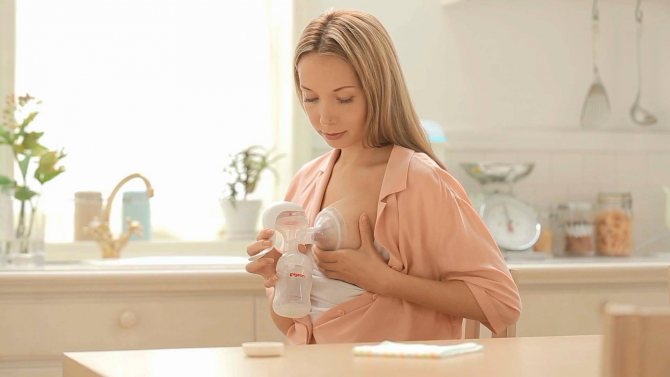
The need to express milk arises if the baby’s feeding regimen is not followed. If you do not feed your baby on time, a large amount of milk fluid accumulates in the milk ducts. To avoid mastopathy, women remove breast milk manually or using a breast pump. If you express milk incorrectly, you may experience cracked nipples.
To prevent unwanted problems from arising, you need to follow the following rules for expressing milk at home:
- Pumping is carried out once every 2 - 4 hours.
- After feeding the baby, expressing milk should last no more than 15 minutes.
- Artificial removal of breast milk should be carried out only when there is discomfort in the chest.
- Breastfeeding and expressing milk should be on schedule. The time and volume of expressed milk must be chosen so that the mammary gland has time to fill with nutrients before feeding the baby.
Incorrect breast care
Frequent washing of the mammary glands, or, conversely, lack of hygiene, leads to irritation of the nipples and areolas. The microflora of the skin is disrupted, and lubricant is not released from the nipple canaliculi. Thus, the protective functions of the skin of the breast and nipples disappear. In order not to provoke irritation of the skin of the breast and not to accidentally attach an additional infection, washing the breast more than 3 times a day with soap and water and drying the nipples with dry towels is not recommended.
Application of nipple
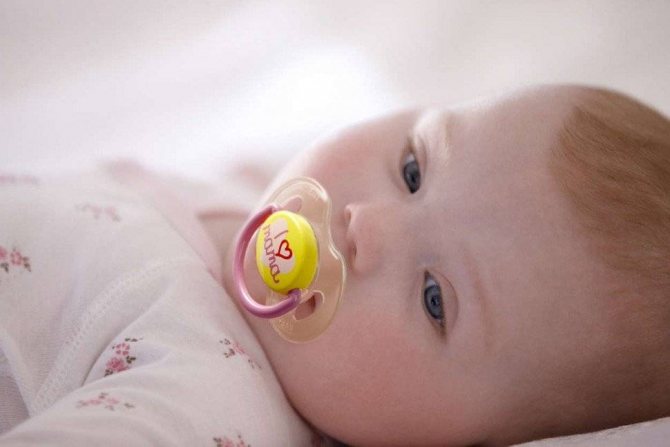
Damage to the nipples is possible with the introduction of artificial feeding and the use of pacifiers. Breastfeeding and the use of silicone nipples confuse the child’s thinking, so the baby often confuses the mother’s breast with an artificial pacifier. Since the sucking technique of the oral cavity becomes unified, rough sucking and “chewing” of the nipple also harms the mother’s breasts. For this reason, doctors recommend that when breastfeeding, do not give your baby artificial nipples and toys to facilitate teething.
